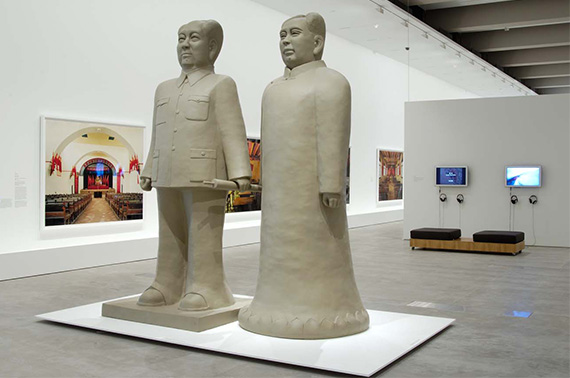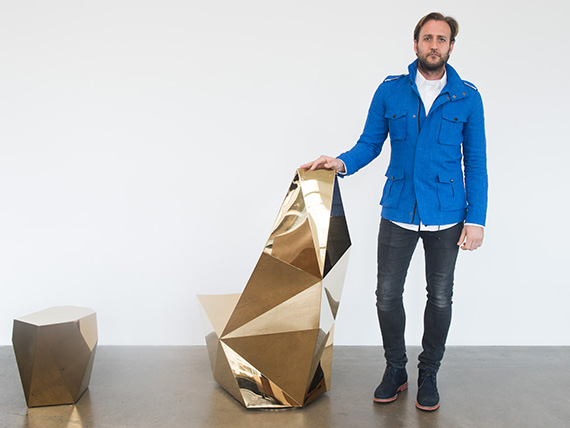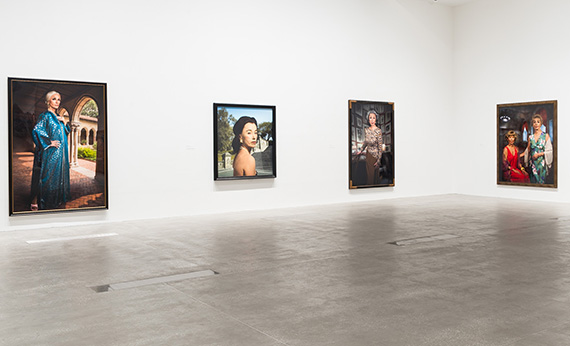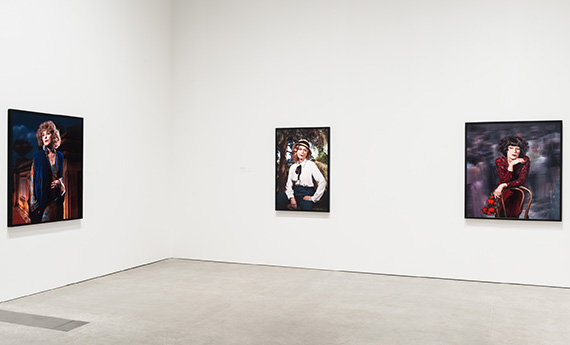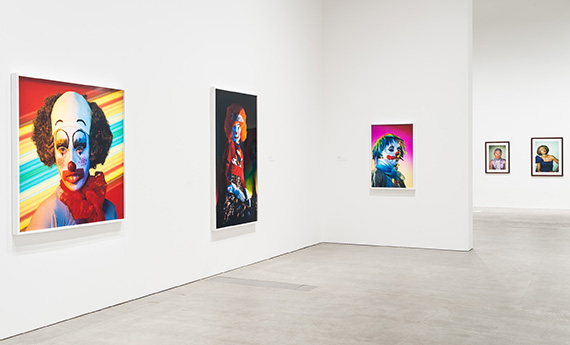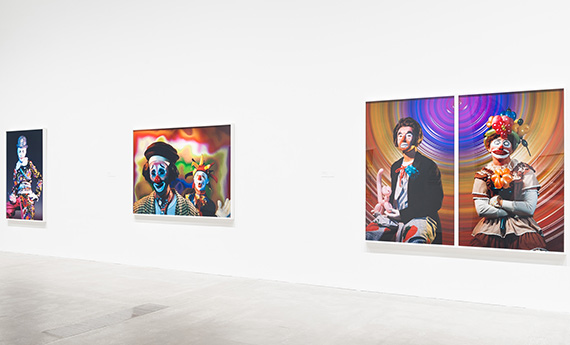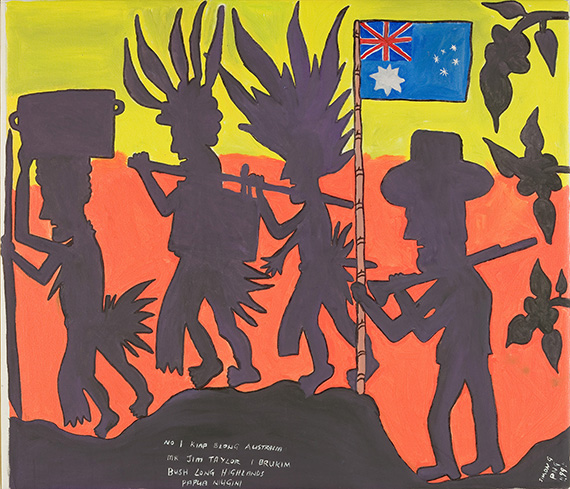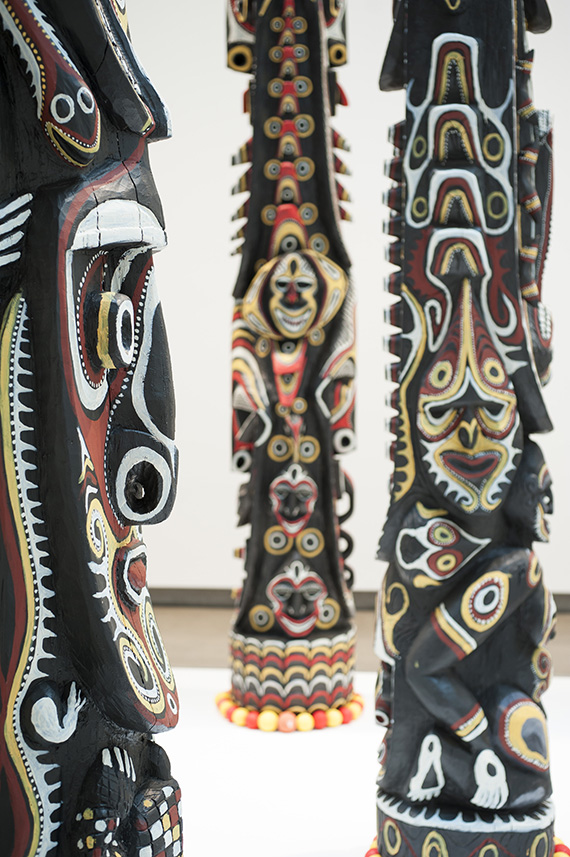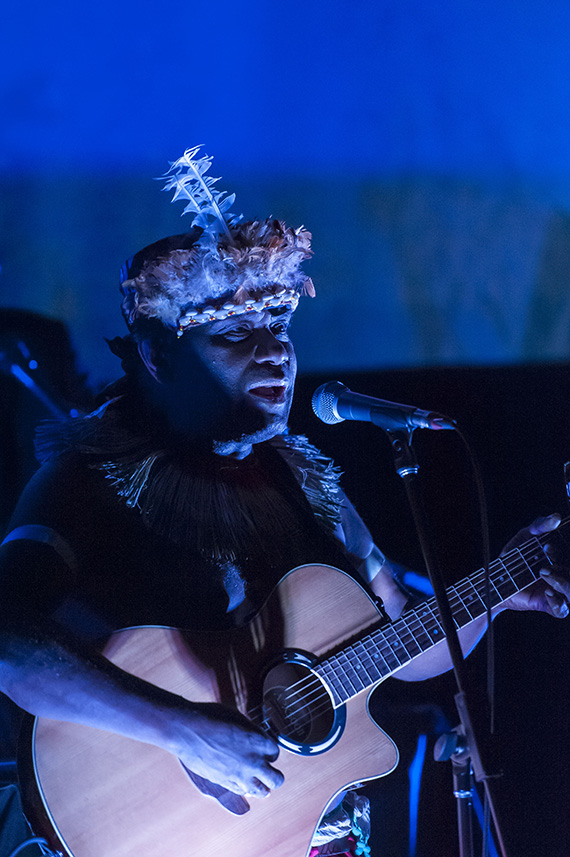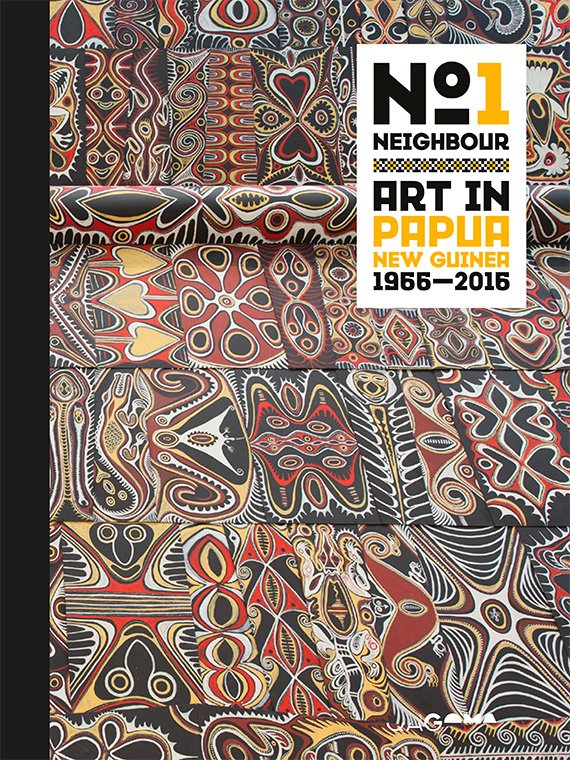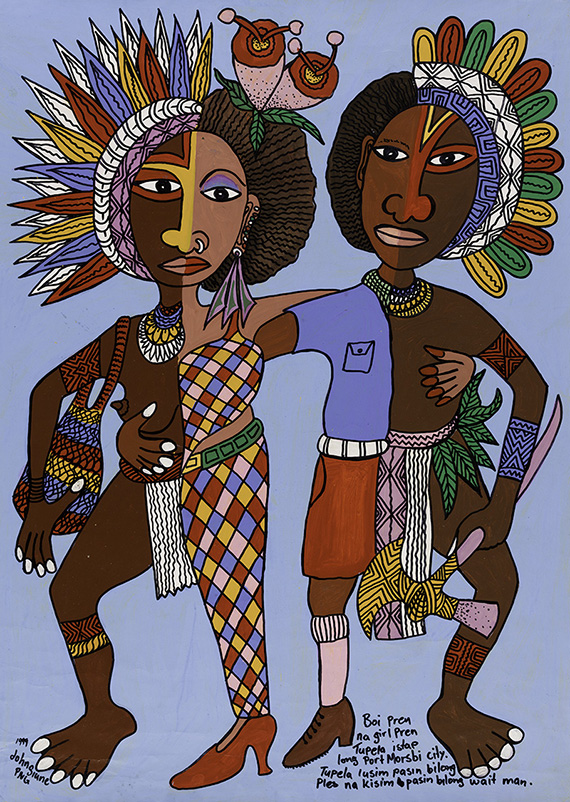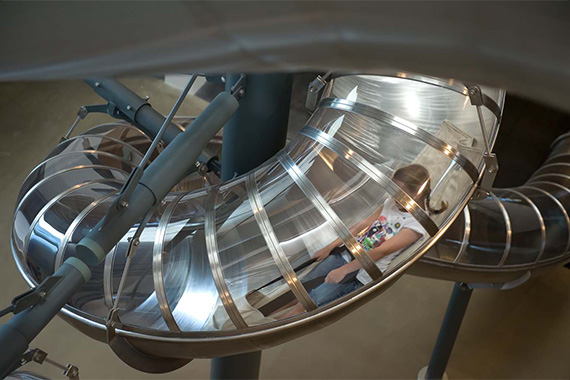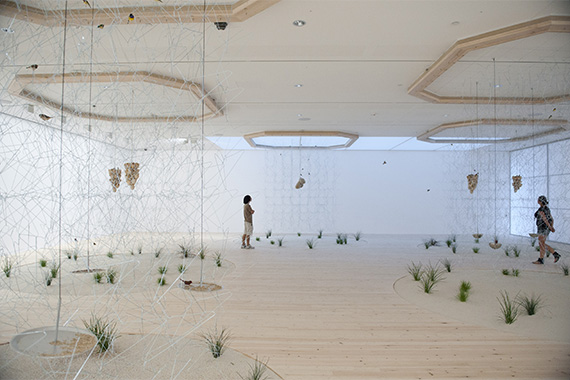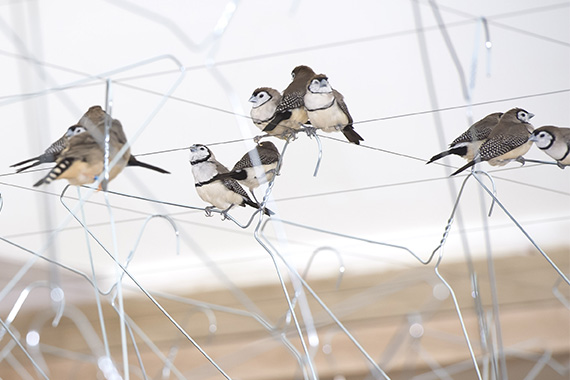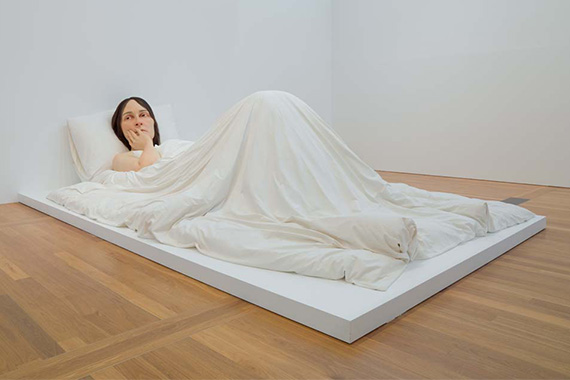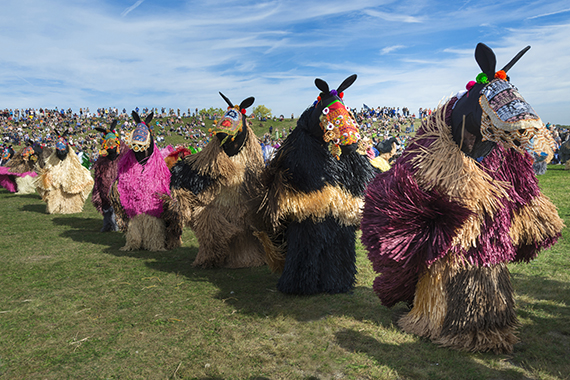GOMA officially turns 10 on 2 December 2016. On that day in 2006 ‘The 5th Asia Pacific Triennial of Contemporary Art’ (APT5) opened in our much-anticipated second building, the Gallery of Modern Art (GOMA) and provided the opportunity for the Gallery to present a dynamic program of exhibitions on a scale never before seen in Brisbane in unmatched dedicated art exhibition spaces.
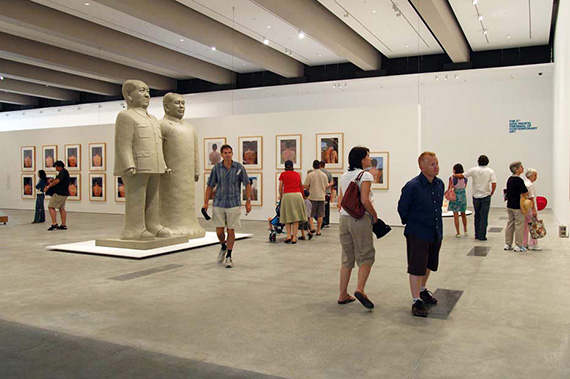
Only 150 metres apart, the Queensland Art Gallery which opened in South Bank in 1982 and its sister site the Gallery of Modern art have become two vibrant architectural sites connecting Brisbane with art.
GOMA’s architecture is impressive and monumental without being intimidating, international yet responsive to local conditions, and pays homage to Queensland’s architecture. The building was awarded the 2007 Royal Australian Institute of Architects National Award for Public Architecture.
GOMA also opened with the new home to the Children’s Art Centre which since 2001 had collaborated on interactive artworks with leading artists from around the world for kids and families, and the Australian Cinémathèque, the only dedicated cinema facility in an Australian art museum showcasing the work of influential filmmakers and international cinema.
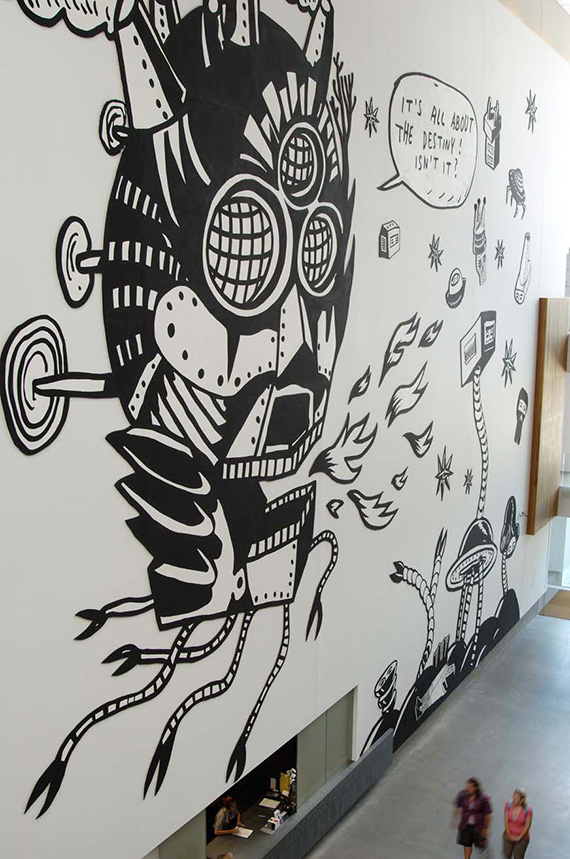
Our 10-year milestone is a time to reflect on GOMA’s impact locally and nationally, and to look toward its future. GOMA has been a force for cultural change, stimulating our audience’s appetite for contemporary art and ideas. It’s also a time to look back at a decade of world class exhibitions and programs and celebrate new additions to the state art Collection.
The Gallery’s contemporary Collection is at the heart of GOMA Turns 10 demonstrating the Gallery’s commitment to be truly international in contemporary art collection development.
Over the next 10 weeks we’ll look back at your favourite exhibitions held at GOMA as we countdown to the opening of ‘Sugar Spin: you, me, art and everything’ our major, free exhibition headlining the 10th anniversary celebrations. ‘Sugar Spin’ will also include many acquisitions secured through the Gallery’s flagship Asia Pacific Triennial series of exhibitions.
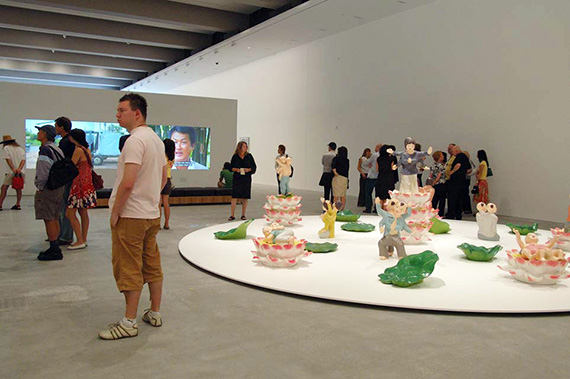
We start the countdown with APT5. With four ground-breaking APT’s already held at the Queensland Art Gallery, APT5 opened in two sites with around 353 works by 35 artists, filmmakers and performers and besides being our largest exhibition, was also the Triennial’s strongest representation of Pacific artists to date. Curated cinema and performance programs brought a dynamic new dimension to APT, and allowed an exploration of these media on a scale never before presented. For APT5 the Gallery undertook an intensive acquisitions program, with approximately 70 per cent of works displayed acquired for the Collection.
The ‘Asia–Pacific Triennial of Contemporary Art’, continues to be the only major exhibition series in the world to focus exclusively on the contemporary art of Asia and the Pacific, including Australia.
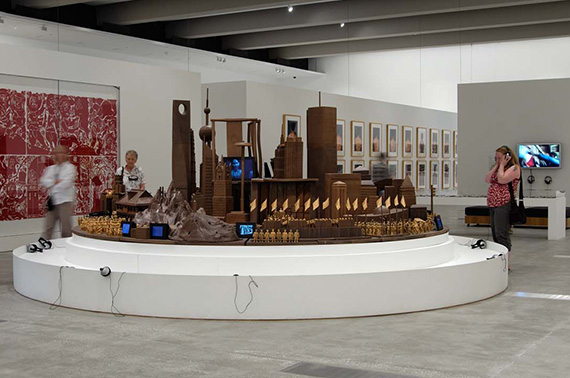
Artists included Ai Weiwei; Khadim Ali; Jackie Chan; Beck Cole; Justine Cooper; eX de Medici; Jitish Kallat; Anish Kapoor; Bharti Kher; Sutee Kunavichayanont; Kwon Ki-soo; Dinh Q le; Long March Project; Djambawa Marawili; Nasreen Mohamedi; Tuan Andrew Nguyen; Dennis Nona; Eko Nugroho; Tsuyoshi Ozawa; Pacific Textiles Project; Stephen Page; Paiman; Michael Parekowhai; John Pule; Nusra Latif Qureshi; Rashid Rana; Sangeeta Sandrasegar; Kumar Shahani; Talvin Singh; Michael Stevenson; Masami Teraoka; Yuken Teruya; Sima Urale; Viet Linh; Gordon Walters; Apichatpong Weerasethakul; Yang Fudong; Yang Zhenzhong and Yoo Seung-ho.
